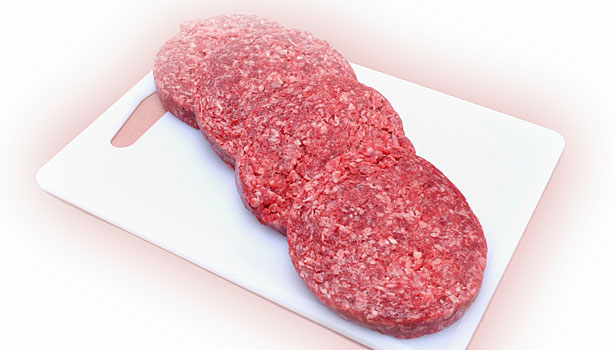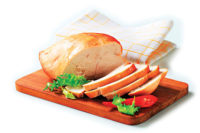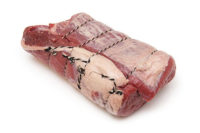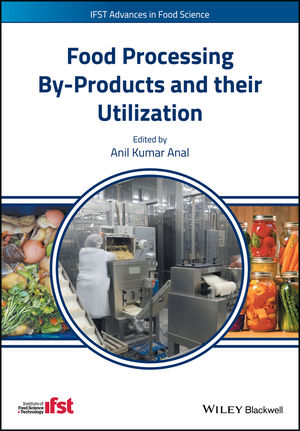Last year, a new burger patty was introduced to foodservice operators that cooks in half the time of other burgers. Created by natural texture forming, the Revolution Burger by 80-year-old Cardinal Meat Specialists has a loose grind that maintains its product integrity during the cooking process, which clocks in at six minutes.
Convenience products, whether they are burger patties, boneless hams or chicken nuggets, have never been more popular. Processors can expect to see growth from new or increased amounts of formed products.
“Even ground meat patties appear to be a growing market compared to bulk ground product at the consumer level,” says Robert Maddock, PhD, associate professor, Animal Sciences, North Dakota State University, Fargo, N.D. “Of course, foodservice providers are always looking for new ways to expand product offerings, either as a special or as a main menu item — the McDonald’s McRib is the best example.”
And consumers demand low-sodium, clean-label products at a decent price today. So processors are continually upgrading their product formulations and technology.
“I believe that processors of formed products will continue to exploit current technology and to explore other opportunities to improve the shape and texture of formed products, particularly with the rising costs of meat animal proteins,” says Wes Osburn, PhD, associate professor, Department of Animal Science, Texas A&M University, College Station, Texas.
Binding healthy meats together
The formulation of formed or restructured meat and poultry products usually requires ingredients to help bind muscle pieces together to create the final product’s shape and texture, says Osburn.
“This would include ingredients such as salt, phosphates and usually the addition of either a starch, hydrocolloid gum or additional protein binder such as soy, a combination of these ingredients or it could be an enzymatic binder such as transglutaminase,” he says.
The challenge with formed product formulations is trying to maintain product quality while also trying to reduce sodium content or trying to remove or minimize the previously mentioned ingredients to provide “cleaner” labels on formed meat products.
The formulation process has a tough balancing act to ensure that salt levels are high enough for adequate protein binding and the flavor profile that processors want versus minimizing salt to meet consumer demands, says Maddock.
“Right or wrong from a health standpoint, formed products such as chicken nuggets and other similar products will have added sodium, and many breaded products will have wheat flour as an ingredient,” so they are not gluten free, says Maddock. “Processors should be aware of these market trends and be able to formulate products accordingly.”
As processors accommodate the trend for natural and lower sodium products, they have to look for new technologies that will compensate for less salt and phosphate use.
“Other ingredients such as transglutaminase, alginate, added nonmeat proteins and similar texturizing agents can be considered depending on the limitations for ingredients that apply to a specific product or product type,” says Joseph Sebranek, PhD, Charles F. Curtiss Distinguished Professor in Agriculture and Life Sciences, Department of Animal Science, Department of Food Science and Human Nutrition, Iowa State University, Ames, Iowa.
However, most processors will only use new technology if they feel they can gain an economic advantage by utilizing it.
“Often technology can add expenses that may be hard to recover,” says Al Booren, meat processing consultant, AlMarc Solutions LLC, Lansing, Mich.
Particularly, smaller processors will continue to use the equipment in which they have invested, even if there are economic and quality gains that could be made by updating older forming equipment, says Maddock.
“The use of natural texture forming technology could result in higher quality products for most processors, but the time to pay back for new equipment and yield decisions are going to drive any plans for changing or updating equipment,” he says.
Reviewing formulation technologies
As always, a continuing challenge is to form products without overworking the meat.
“Protein changes may affect ultimate quality and consumer acceptance,” says Booren. “The more we learn about individual muscles, additives which aid in functionality and equipment changes, product formulation will likely become a more critical issue.”
Indeed, another ongoing challenge for processors when forming low-sodium products is compensating for the loss of the texture and binding achieved by salt and phosphates in traditionally formed products.
“Those two ingredients are major players in protein extraction and binding of meat proteins and are difficult to replace without also seeing changes in texture and yield,” says Sebranek. “Processors will need to spend some time and effort working with suitable ‘new’ ingredients to try to reach similar product properties.”
It is certainly not an easy change to make, but vendors can provide suggestions, he says.
In addition, the continuing effort to produce more “natural” looking formed products is still a goal and a challenge for forming technology, Osburn says.
“Forming equipment that can adjust pressures, speeds, temperature, etc., to account for the structural or textural differences between various meat and poultry protein blends — including fat content — is essential to produce formed products that have a more ‘natural’ or three-dimensional shape, similar to what whole muscle products exhibit,” he says.
Indeed, production speeds and flexibility are still critical. “My sense is that quick changeover capability for production efficiency when changing from one animal protein source or blend to another protein formulation or blend is still critical, as well as ease of sanitation,” says Osburn.
Rethinking formed products
It’s been said that consumers associate formed products with being a less expensive and lesser quality product alternative, compared with whole muscle or non-formed products, notes Osburn.
“However, if the formed product delivers acceptable quality and economic value, consumers will continue to demand them,” Osburn says.
Due to the rising cost of meat animal proteins, formed products have an opportunity to gain more market share — compared with whole muscle products — as long as they deliver value.
Despite consumer skepticism about nuggets or patties, says Booren, they still want the convenience that many formed products bring.
“This may include cooking ease or consistency, improved bite or texture and better perceived flavor,” he says.
The market will continue to grow for formed products most likely due to their convenience factor.
“Even if many consumers are trying to avoid processed foods, this is still the vocal minority and the market for formed products is likely to continue to grow,” says Maddock.










